Want some power tools for your relationships in the midst of the busy-ness of life?
As human beings, we are social creatures. We grow in relationship to each other. Take some time to add a few powerful tools to your relationship toolbox –You’ll feel more love, energy, and peace in your life, guaranteed!

Power Tools in this Relationship Toolbox:
- The 4 S’s: Safe, Seen, Soothed, and Secure
- ARE: Accessibility, Responsiveness, and Engagement
- Rupture and Repair: Part of the cycle of life
- Everyday Tools: Clarity, Communication, and Carving out time together
Like any tools in a toolbox, you’ll find that you can only focus on one at a time, and that many work well together on a project. I’ve shared a number of ideas with you below, so I recommend choosing one at a time to really focus on in your relationships.
You can return again and again to this toolbox to try out a different tool. See what speaks to you, write a few key words down and post them somewhere where you’ll see them.
As you practice using these relationship tools, watch how your focus on your tool shifts the dynamics of your relationships in powerful ways. Need support? Schedule a Complimentary Clarity Call or your next parent coaching call with me (if you’re already a client).
The 4 S’s: Safe, Seen, Soothed, and Secure
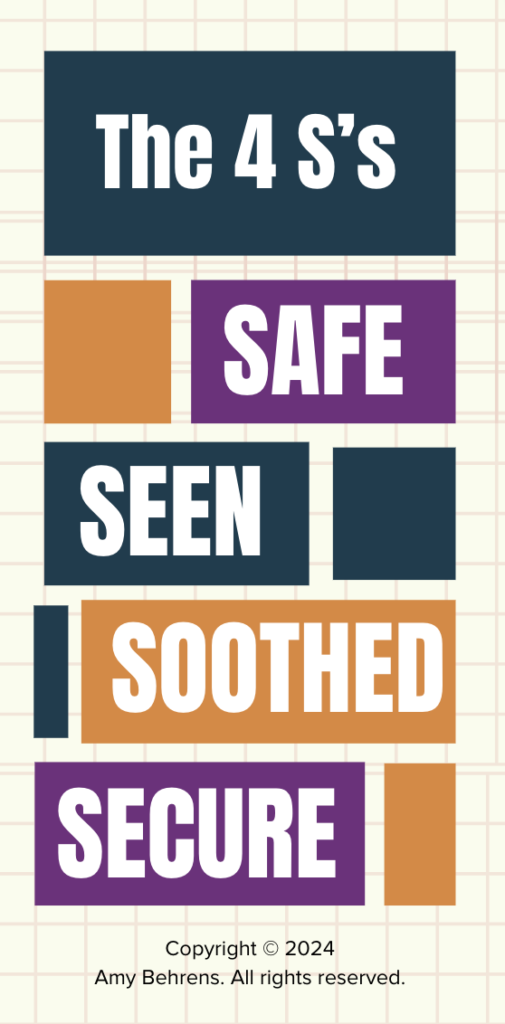
Attachment theory applies for both child and adult relationships. Everyone needs to feel safe, seen, and soothed to feel secure, to use Daniel Siegel and Tina Payne Bryson’s attachment language. They explore these ideas in their book The Power of Showing Up: How Parental Presence Shapes Who Our Kids Become and How Their Brains Get Wired.
Children develop in healthy ways when parents and caregivers:
- Make them feel safe physically and emotionally (SAFE)
- Seek to understand and respond to their inner needs, wishes, and worlds (SEEN)
- Show empathy and kindness when children are feeling upset (SOOTHED)
- Consistently show up to make them feel safe, seen and soothed (SECURE)
Relationships between adults flourish from these attachment practices as well. When your partner, friend, family member or co-worker makes you:
- feel safe or comfortable
- seeks to understand your feelings and perspective
- responds kindly to your needs
- shows up consistently
You feel secure in that relationship. When they don’t do one or more of those things, you may feel less secure, which can lead to anxiety, anger, depression, or burnout.
Parents need to practice these Safe, Seen, Soothed, and Secure ways of being with each other, as well as with their children, in order to model healthy ways of connecting with each other.
ARE: Accessibility, Responsiveness, and Engagement
Dr. Sue Johnson’s wonderful book, Hold Me Tight: Seven Conversations for a Lifetime of Love, does a deep dive into how attachment works between partners. She shares how to communicate in ways that answer yes to the essential questions of: Are you there? Are you with me? Do you care about me?
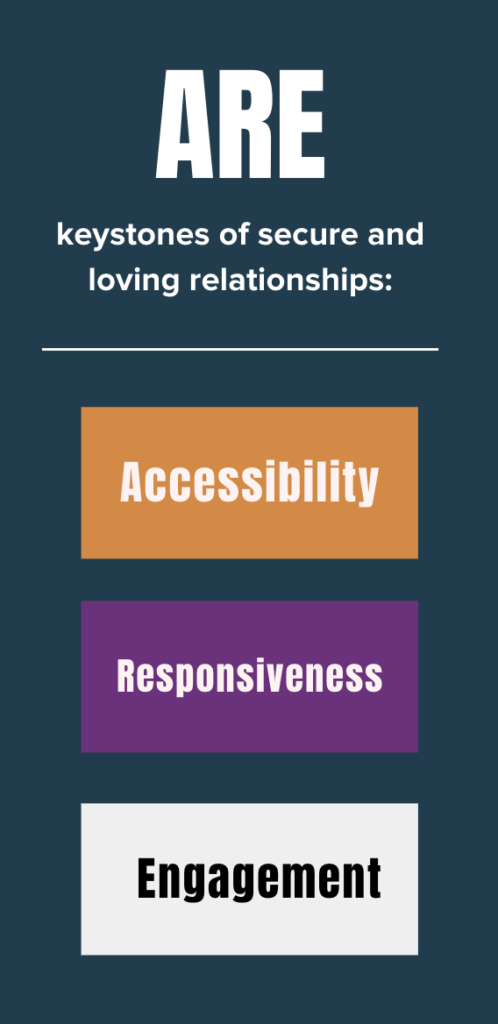
Dr. Johnson uses the acronym ARE as a way of remembering these keystones of secure and loving relationships:
- Accessibility: Can I reach you? Are you willing to struggle with me through discomfort, insecurity, challenge, and frustration?
- Responsiveness: Are you able to respond to me emotionally? Will you attend to both my needs and my fears and share your own with me?
- Engagement: Will you value me and stay close to me? Can I count on you to stay involved in our relationship?
Parenting and our own upbringings can make it hard and stressful to practice these essential pathways to positive relationships. However, we can learn how to navigate tricky moments in conversations in order to stay engaged and respond to each other’s needs.
Rupture and Repair: Part of the cycle of life
What is a rupture? Ruptures include a broad category of experiences that include conflict, unexpected changes or losses, differing opinions and many types of situations that cause hurt and disappointment. They are part of life because life means things are always changing.
Repair is how we make sense of, adapt to, and own our part in the ruptures that occur in life. Repairs can include naming what happened, acknowledging the impact, owning our part in something, saying “I’m sorry” if we are at fault in some way, and planning a way forward. Deep love comes from repairs.
Examples of ruptures and repair steps for the 3 D’s:
- Distraction: One person feels ignored or forgotten by the other and says or does something to express frustration.
- → Repair: Name the situation, apologize for one’s part, and talk about how to stay present and/or how to ask for attention in an effective way.
- Disagreement: One person doesn’t like the behavior, request, or opinions of another person and they start arguing.
- → Repair: Observe what is happening. Acknowledge each person’s feelings, needs, and priorities. And then, make a specific request that can help meet those needs. You can collaborate to find a way to meet both people’s needs while moving forward.
- Disapproval: One person disapproves of something the other person says or does and makes a judgmental comment, look, or action.
- → Repair: The person who has been judged can point out what happened and how it felt and the judger can 1) acknowledge the pain/impact, 2) seek to understand more of the judged person’s perspective and priorities and 3) apologize and pause before speaking or acting in the future to consider multiple points of view.
We can learn to recognize when a rupture has happened and seek to repair instead of avoiding it or staying angry about it. Repair work is essential for healthy relationships and creates opportunities to improve how safe, seen, soothed, and secure others feel with us.
Everyday Tools: Clarity, Communication, and Carving out time together
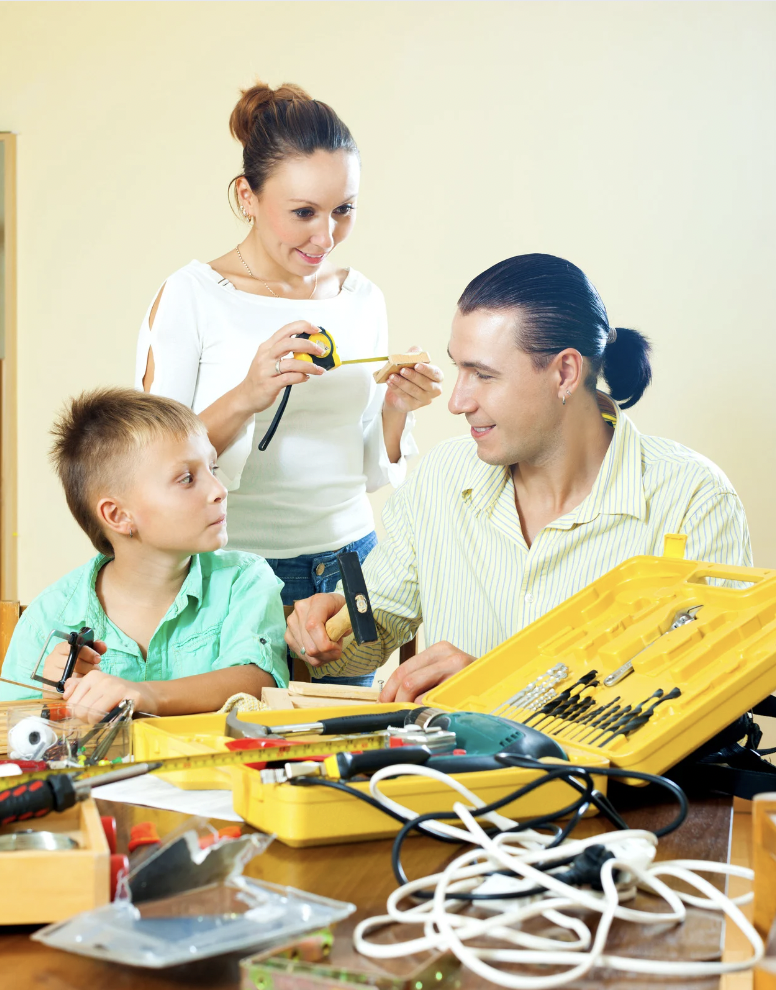
If things get off track in your relationships, it’s best to talk about what’s going on sooner rather than later. In this way, we can avoid making conflicts fester and misunderstandings deepen.
Here are some key tools I use with my own family to keep our relationships feeling healthy and positive.
- Clarity on plans
- Communication about needs, feelings, and requests
- Carving out time to be together in meaningful ways
What the 3 C’s look like in action:
Clarity:
Take time to get clear on each person’s needs and plans each week or day so that you know where each person is and what’s important to them on a regular basis. When you get frustrated, listen to each other to get clear on what went wrong and take time to figure out how to do better in the future.
Communication:
Seek to know and understand each other’s needs and feelings. This means being open about your own feelings and needs and asking questions to understand other’s feelings and needs. Make specific requests to get your needs met. As I often tell my coaching clients, specific requests get a much higher rate of response than vague or generalized wishes. A winning formula that comes from Nonviolent Communication: A Language of Life by Marshall Rosenburg is:
- I’ve noticed that …(non-judgmental observation)
- I’m feeling… (name an emotion)
- Because I need…(state a core human need)
- Would you be willing to…(make a specific request to help meet your need)
Check out this list of feelings and needs if you want to learn more. You can schedule a Complimentary Clarity Call with me to learn how to apply this formula to your own relationships.
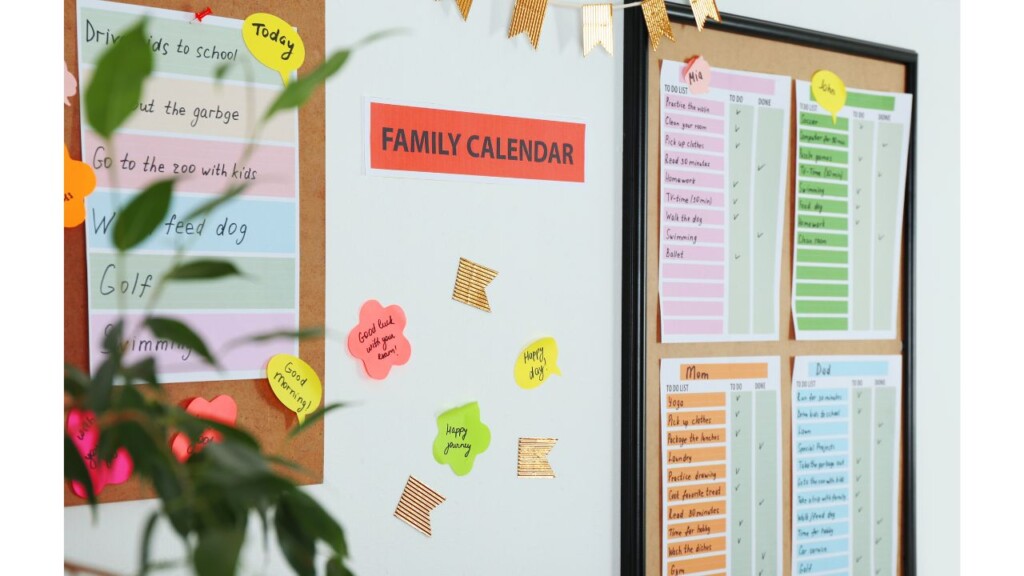
Carving out time together:
Relationships can only flourish if you spend time together. Life and parenting can make us feel busy, overwhelmed, scattered, or on a tight schedule. It’s easy to put time with your partner or with a child one-on-one on the back burner while tending to the “hot” items calling for your attention. Therefore, we need to consciously carve out regular time to be together with people we care about instead of just seeing if it happens. Even 10-15 minutes of focused time with a child, partner, or friend where you are totally present for each other brings relaxation, connection, and feelings of warmth and love. These feelings are good for both of you.
Relationships require time, energy, focus, and love. We grow as we learn to communicate effectively with each other.
Life is all about relationships.
Learning how to use new tools and applying ideas to daily life takes focus and practice, which is why parent coaching can be so helpful. We create the space for regular reflection on daily experiences as we apply ideas we want to bring to life.
We can also focus and practice on our own and with our families, which is why I’m sharing these ideas with you today. See which ideas speak to you, write them down or take a photo of them and then focus on trying to practice them. Then let me know how it goes, by replying, posting a message, or sending me an email. I’d love to hear what you test out and learn!
Who I serve: I coach parents from coast to coast in the US and internationally. Thanks to Zoom, I am currently coaching parents from Boston to Seattle, Connecticut to California, as well as New York, Ohio, and Colorado. I’ve worked with parents in Bermuda, Japan, Portugal, and Canada as well. I’m grateful for these global and domestic connections!
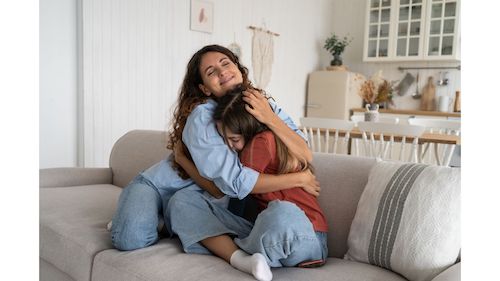




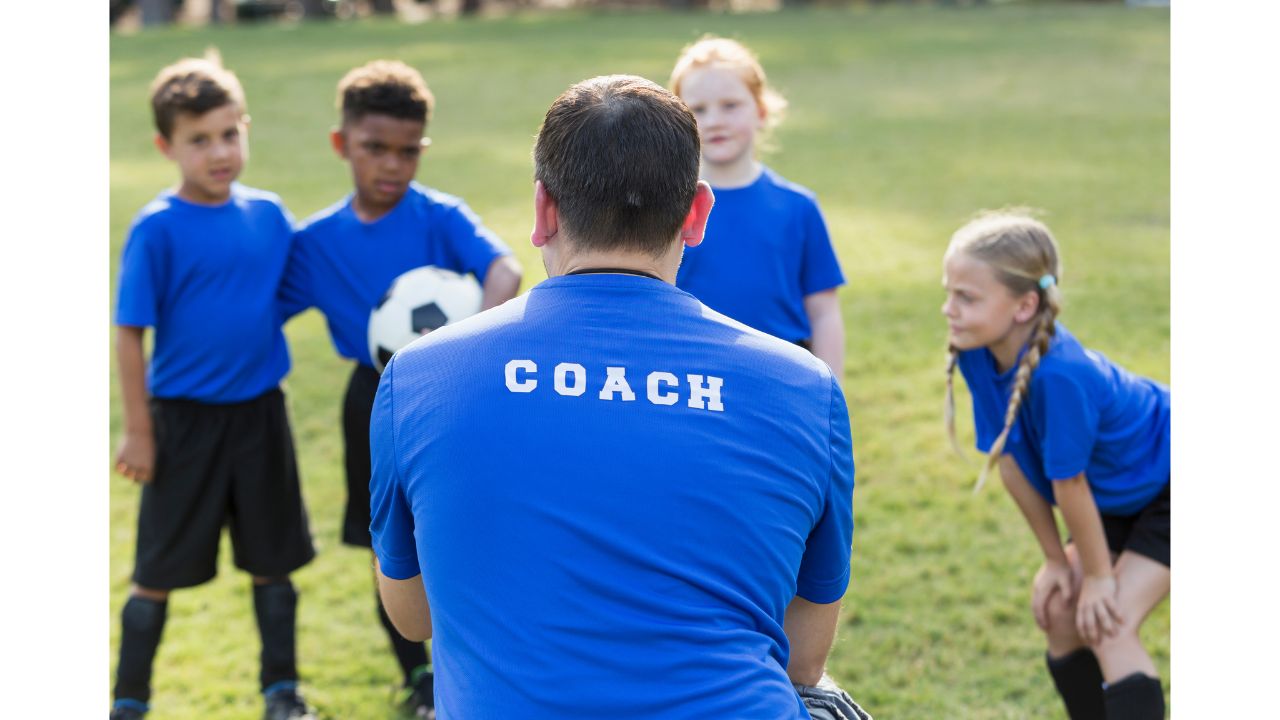

Leave A Comment